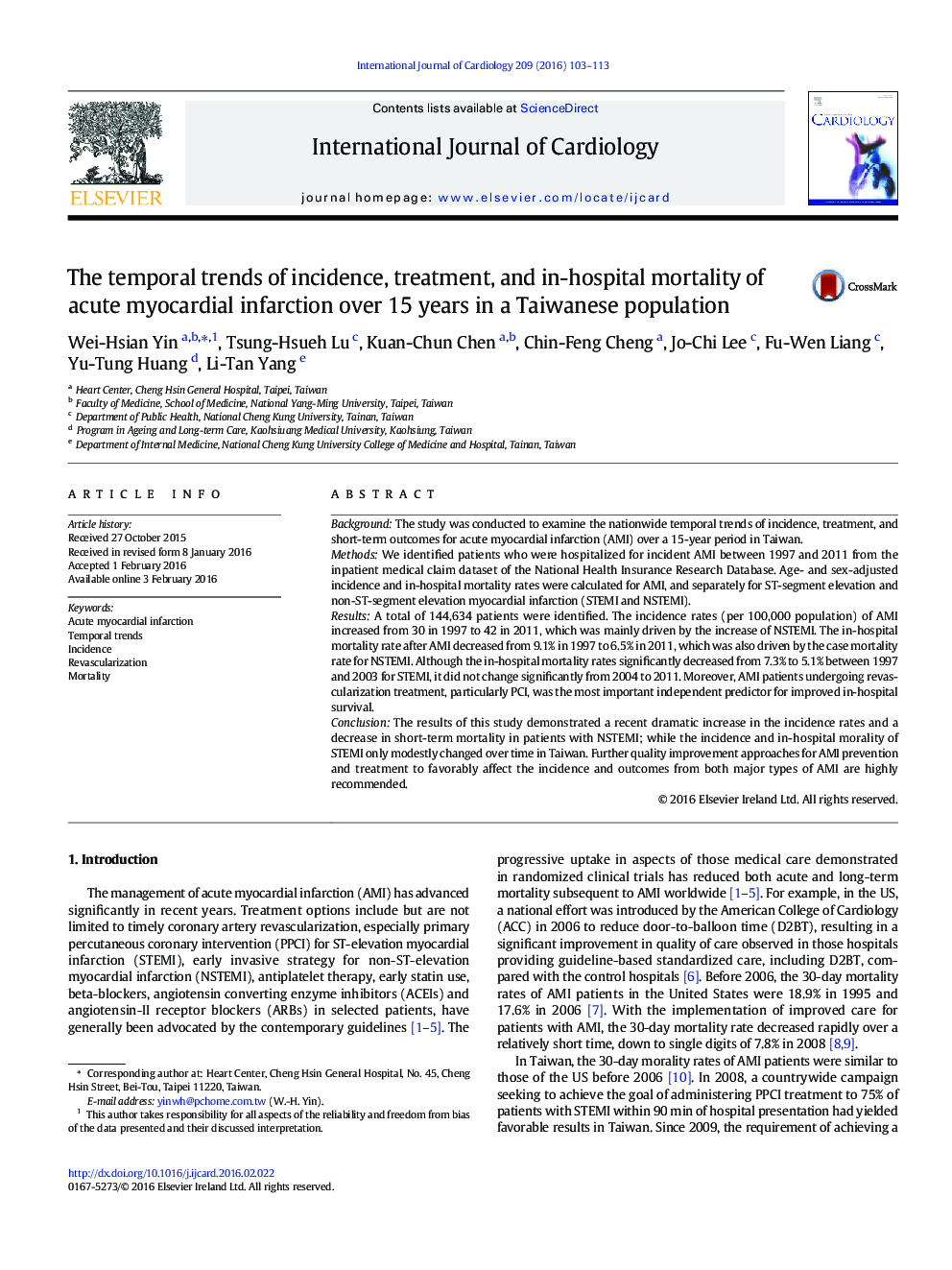| کد مقاله | کد نشریه | سال انتشار | مقاله انگلیسی | نسخه تمام متن |
|---|---|---|---|---|
| 5965097 | 1576141 | 2016 | 11 صفحه PDF | دانلود رایگان |
BackgroundThe study was conducted to examine the nationwide temporal trends of incidence, treatment, and short-term outcomes for acute myocardial infarction (AMI) over a 15-year period in Taiwan.MethodsWe identified patients who were hospitalized for incident AMI between 1997 and 2011 from the inpatient medical claim dataset of the National Health Insurance Research Database. Age- and sex-adjusted incidence and in-hospital mortality rates were calculated for AMI, and separately for ST-segment elevation and non-ST-segment elevation myocardial infarction (STEMI and NSTEMI).ResultsA total of 144,634 patients were identified. The incidence rates (per 100,000 population) of AMI increased from 30 in 1997 to 42 in 2011, which was mainly driven by the increase of NSTEMI. The in-hospital mortality rate after AMI decreased from 9.1% in 1997 to 6.5% in 2011, which was also driven by the case mortality rate for NSTEMI. Although the in-hospital mortality rates significantly decreased from 7.3% to 5.1% between 1997 and 2003 for STEMI, it did not change significantly from 2004 to 2011. Moreover, AMI patients undergoing revascularization treatment, particularly PCI, was the most important independent predictor for improved in-hospital survival.ConclusionThe results of this study demonstrated a recent dramatic increase in the incidence rates and a decrease in short-term mortality in patients with NSTEMI; while the incidence and in-hospital morality of STEMI only modestly changed over time in Taiwan. Further quality improvement approaches for AMI prevention and treatment to favorably affect the incidence and outcomes from both major types of AMI are highly recommended.
Journal: International Journal of Cardiology - Volume 209, 15 April 2016, Pages 103-113
